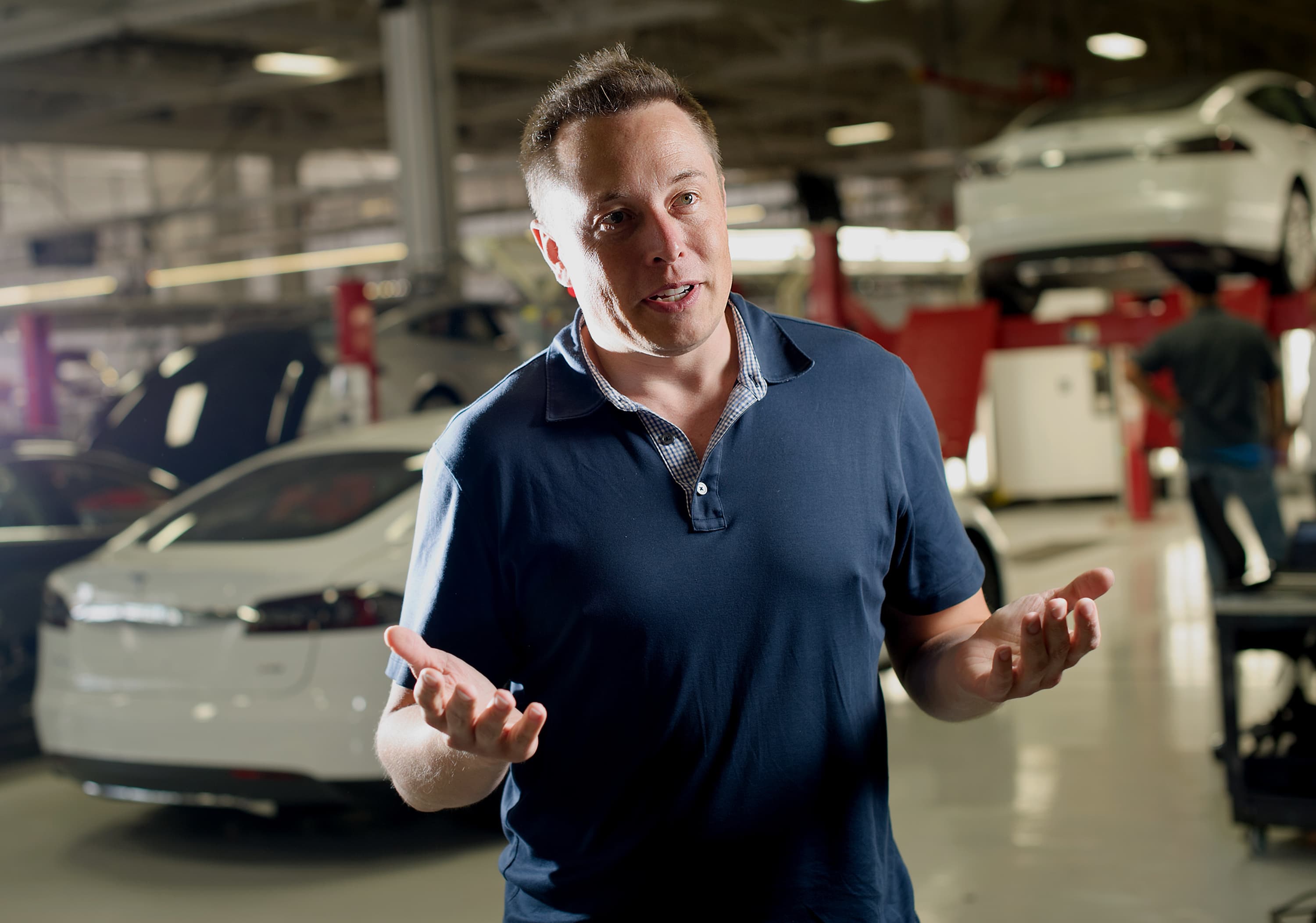Tesla is expected to report third-quarter earnings after the bell on Wednesday. The day before the call, analysts were expecting losses of 46 centers per share, with revenue of $6.42 billion for Elon Musk’s electric car and renewable energy company, according to data compiled by FactSet.
The call will mark the first financial report from the company without co-founder and former CTO JB Straubel at the helm with Musk. If analysts are correct, the third-quarter of 2019 may also mark the first time that revenue growth declines for Tesla.
Analysts’ tempered expectations for Tesla were informed by an earlier Q3 vehicle production and deliveries update that set a company record, but still missed Elon Musk’s internal goals. Tesla said it delivered 79,600 Model 3 cars, and 17,400 of its higher priced Model S and X vehicles during the third quarter. Musk had pushed employees to hit or surpass 100,000 deliveries for the quarter.
Last year, during the same period, Musk boasted about a “historic” Q3 with Tesla well surpassing street expectations with $6.82 billion in revenue from increased production and sales of the Model 3, which is still its newest model vehicle.
In terms of revenue and margins, wildcards abound this quarter.
Shareholders have no precedent to forecast revenue from the Tesla Auto insurance offering. The company rolled out its own auto insurance, starting in California, in late August. And historically, Tesla has given little visibility into their regulatory credit sales by quarter.
Tesla has made over $1 billion in the last three years by selling emissions credits in the United States, including a deal that was reported in April with Fiat Chrysler. The Italian-U.S. carmaker agreed to pay Tesla hundreds of millions of euros to allow Tesla vehicles to be counted in its fleet to avoid fines for violating new European Union emission rules.
AB Bernstein’s senior technology research analyst, Toni Sacconaghi, raised questions about Tesla’s “Autopilot cookie jar,” in a note on Monday ahead of earnings. He wrote:
“Today, Tesla defers about $2,000 – $3,000 in revenues per car sold at time of sale – roughly half can be ascribed to Autopilot/FSD, and half to free/discounted Supercharging, free internet connectivity and future OTA software updates. In contrast to most of Tesla’s deferred revenue, which rolls off fairly predictably, recognition of deferred Autopilot/FSD revenue can be very non-linear: every time new Autopilot functionality is added, Tesla will draw down incremental deferred revenues for what it believes to be the value of the new functionality.”
Smart Summon was released in the third quarter in the U.S. and allows eligible Tesla owners to command their cars to “come to me,” and drive without anybody behind the wheel from a parking spot to where they are standing.
Sacconaghi estimated that Tesla could recognize revenue from that software upgrade of $100 to $250 per car this quarter, across approximately 200,000 cars, adding $15 million to $50 million to their bottom line, and making a positive impact to automotive gross margins.
Besides clarity on Autopilot revenue, regulatory credit sales and Tesla auto insurance, Wall Street is seeking an update on electric vehicle demand in China.
After breaking ground on a factory in Shanghai in January, Tesla has prepared to start production at its “Gigafactory 3” soon. Producing cars in mainland China is expected to reduce costs from tariffs and ocean transport for the company. But at the same time, new car sales in China have softened this year.
Shareholders– and customers who pre-ordered them — also want Musk et al to say, definitively, when deliveries of their forthcoming crossover SUV, the Model Y, should begin and what impact Model Y sales should have on Tesla’s existing Model 3 business.
Piper Jaffray’s Alexander Potter (who forecast a 12-cent loss per share ahead of consensus) wrote in a note to clients ahead of the earnings update:
“As always, accurately predicting quarterly results will remain a challenge for the next few quarters, particularly because it’s difficult to pinpoint the exact timing of Tesla’s new facility in China – not to mention the launch timing for the Model Y crossover. While these initiatives create modeling headaches, we think they will position Tesla favorably in the medium-to long-term.”
Musk previously said that Tesla would deliver between 360,000 and 400,000 vehicles in 2019 and become profitable in the second half of the year. That remains possible only if Tesla makes 105,000 vehicle deliveries in the fourth quarter.
Follow @CNBCtech on Twitter for the latest tech industry news.
